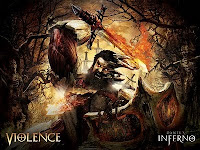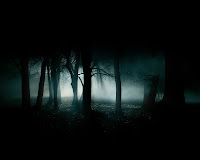Some say in ice.
From what I've tasted of desire
I hold with those who favor fire.
But if it had to perish twice,
I think I know enough of hate
To say that for destruction ice
Is also great
and would suffice.
Dante's Inferno and "Fire and Ice" both have fire and ice as a part of the end of the world, or in death. In Dante's work, fire is always symbolic of God's anger. Ice is representative of rejecting God's love and human warmth. Each of these symbols play an important role sculpting Dante's Hell and emphasizing the message and state of certain circles in hell.
Fire first is seen in the Inferno in circle seven, round three. In this circle, the violent against God, nature and art burn in the raining fire and sand. Fire is also seen in circle eight, bolgia three with the si
 moniacs. In these to sections of hell fire is related to God's anger. The sins above go directly against the word of God. Also, Dante the author puts fire in theses sections because he, as a person, consider these sins to be particularly bad. As Dante and Virgil go deeper into the parts of Hell, the more vivid and intense each round becomes, including elements of fire and intense heat.
moniacs. In these to sections of hell fire is related to God's anger. The sins above go directly against the word of God. Also, Dante the author puts fire in theses sections because he, as a person, consider these sins to be particularly bad. As Dante and Virgil go deeper into the parts of Hell, the more vivid and intense each round becomes, including elements of fire and intense heat.Continuing their journey through Hell, past the intense circles and rounds of heat and fire, things become increasingly cold. In circle nine, round one, the poets come across a vast frozen lake. "Wherat I turned and saw beneath my feet and stretching out ahead, a lake so frozen it seemed to be made of glass,"(261). Dante says this as he enters round one and realizes the sinners are in the ice up to their necks, but still being allowed to bend them . Dante and Virgil continue across said lake and meet the souls in round two, who are still in the ice and no longer allowed to move their neck, and the sinners of round three, who are completely submerged in the icy tomb. Since circle nine are the sinners of treachery, they have pushed away any other life form. The sinners have cut all ties with humans so they must be bound in the ice. They are remorseless and the farthest from God's sun. When Dante and Virgil reach the center, they find Satan. Satan is surrounded by ice and beating his wings trying to escape, but the cold air he creates only freezes him more. The ice represents the complete opposite of God's light and warmth, as much as Satan is the opposite of God.
Dante's hell shapes
 a sort of funnel shape. Each round going deeper and deeper into Hell. The farther down, the more intense and vulgar the sin and punishment become. Also once past the the intense heat of the majority of Lower hell, the last circle becomes increasingly colder and frozen which symbolizes being the farthest from God's light.
a sort of funnel shape. Each round going deeper and deeper into Hell. The farther down, the more intense and vulgar the sin and punishment become. Also once past the the intense heat of the majority of Lower hell, the last circle becomes increasingly colder and frozen which symbolizes being the farthest from God's light.Robert Frost and Dante both say that the world will end in fire and ice. Each are equally devastating and would easily complete the job of ending the world or making up the after world.
Mad World by Gary Jules has a very haunting sound. Listening to the lyrics I can see how Dante feels through certain parts of the journey in certain parts of the song. I also feel as if this all feels like a dream to Dante. The dreams in the song state "the dreams in which im dying are the best ive ever had." Although this sounds quite depressing this also represents the sinners in a way. All they wanted to do was die, but now they are stuck in this eternal pain.
* http://www.jango.com/music/Gary+Jules?l=0



